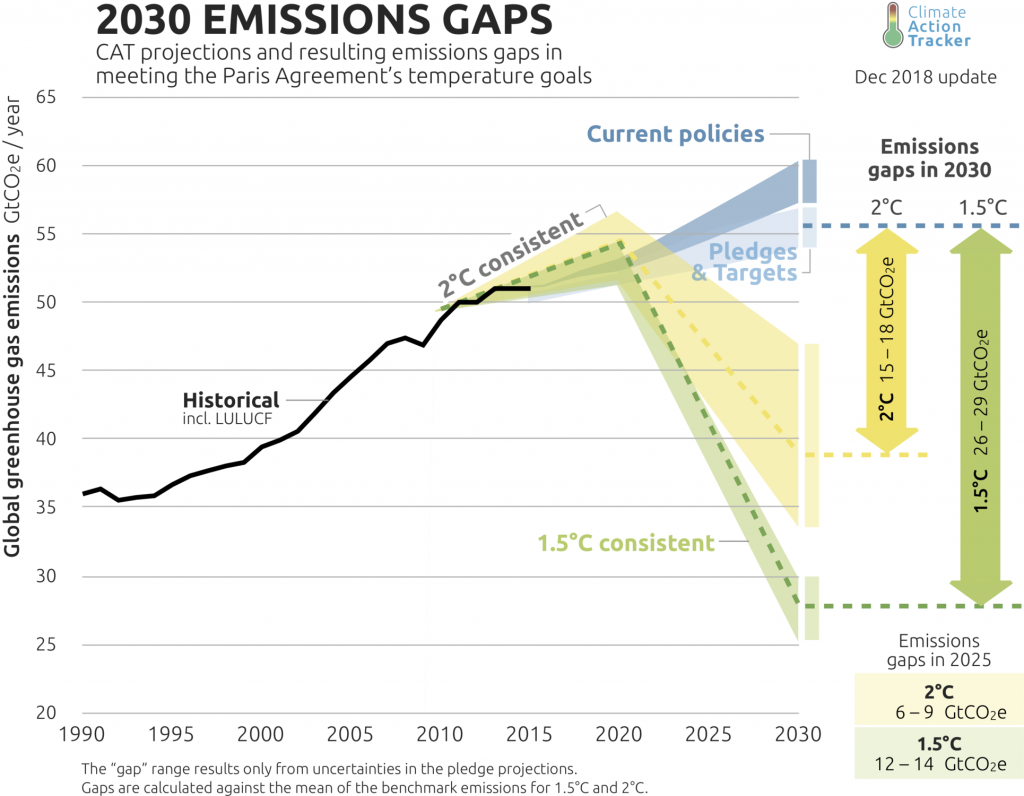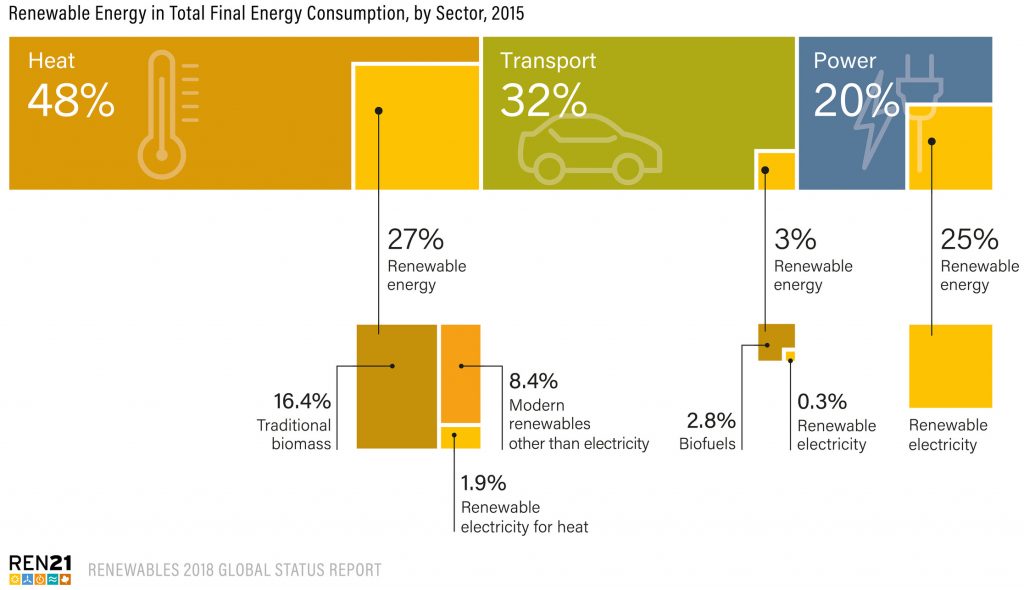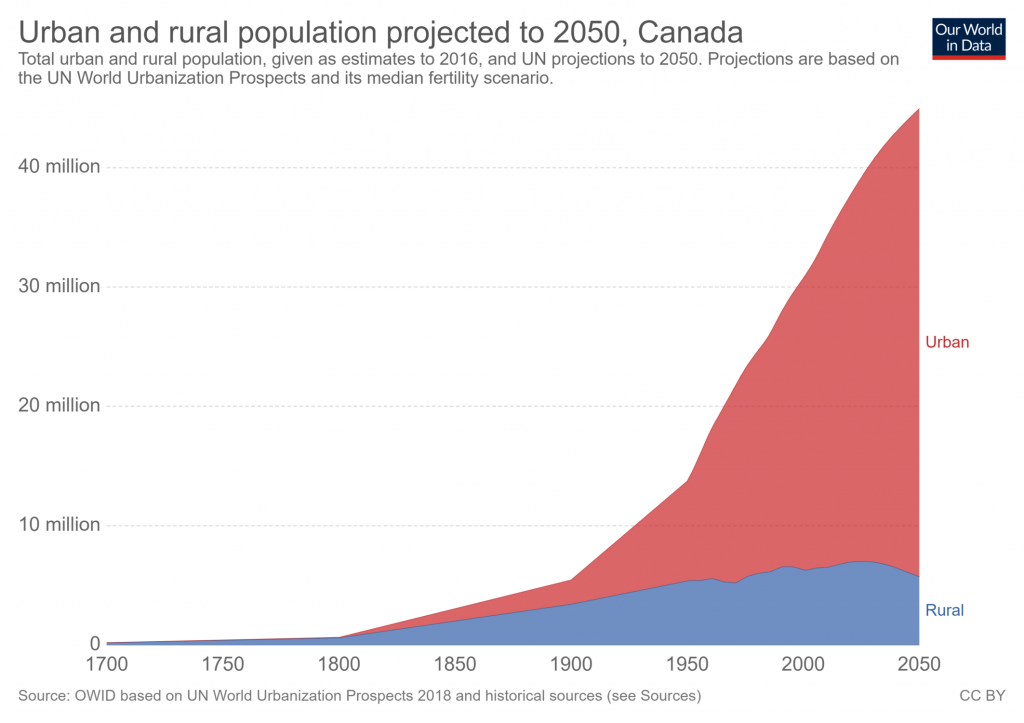
This week the Clean Energy Ministerial (CEM) and Mission Innovation (MI) will gather government ministers, corporate leaders, technology companies, and NGOs from over 25 countries in Vancouver to discuss how to accelerate progress toward a clean energy future. It’s a busy week for clean energy in Vancouver as this city is also hosting the Canada Green Building Council’s annual event, Building Lasting Change, and a conference organized by Renewable Cities on State-City Collaboration on Clean Energy Transformations. So this seems like a good time to take stock on the clean energy transition.
A week does not go by that we aren’t reminded of two inconvenient truths: 1) the climate is changing, more rapidly then we imagined; and 2) despite the growing scientific consensus that we need to achieve net-zero greenhouse gas (GHG) emissions by mid-century to avoid the most devastating impacts of climate change, we are simply not making adequate progress on a large enough scale to come anywhere close to that goal.
The special report of the Intergovernmental Panel on Climate Change (IPCC) issued in October 2018 paints a stark picture of the impacts of global warming 1.5°C above pre-industrial levels, and also of the breathtaking transformation in society that will be required in the coming decade to avoid these impacts. Yet according to the Climate Action Tracker, a collaboration among three independent research organizations which tracks the efforts of 32 countries collectively accounting for 80% of the world’s GHG emissions, none of the largest emitters are currently on track to meet the Paris accord goals for climate protection in 2030, let alone even more aggressive reduction commitments by 2050. Canada’s commitments rank as “insufficient.” The European Union (EU) has been at the vanguard of climate protection, but according to a recent report prepared for the European Climate Foundation, no country in the EU is on track for meeting 2030 climate goals. Germany, home of the much vaunted Energiewende (Energy Transition), ranks second to last in terms of the likelihood of achieving reduction targets.
Heat – The Sleeping Giant
Fossil fuels used in electricity production, transport and heating (including heat for buildings and industry) account for the lion’s share of global GHG emissions. Considerable progress has been made globally in advancing renewable and low-carbon electricity. But there has been comparatively little progress towards renewable and low-carbon transport, heating and cooling. These services together account for 80% of global final energy demand, with heating alone accounting for 48% of global final energy demand.
In 2007, the International Energy Agency (IEA) called heating and cooling the “sleeping giants” of renewable energy potential. Almost 13 years later there has been little progress on decarbonizing heating and cooling at a large scale. In successive annual assessments of global renewable energy progress, the Renewable Energy Policy Network for the 21st Century (REN21) has found that “policy support continues to lag in the renewable heating and cooling and transport sectors.” In a recent progress report on clean energy, the IEA shows modern renewable energy still accounts for less than 10% of global heat production.
The magnitude of the gap and historical rate of progress does not bode well for substantial decarbonization of heating in the next 20 years. Many analysts argue a near complete decarbonization of heating will be required to achieve economy-wide reduction goals. This is because there are even greater practical and economic challenges to significantly reducing carbon emissions in other sectors such as air transport. This is one sleeping giant we need to wake, but we are having trouble rousing. It requires greater political understanding and will to develop more aggressive and effective policies for this sector.
Decarbonizing Electricity is the (Relatively) Low-Hanging Fruit
There are reasons electricity receives the lion’s share of attention in current climate policy. It’s actually one of the easier sectors to decarbonize. And considerable progress has already been made. The electricity sector is characterized by large integrated grids with comparatively few suppliers and plants. Rapid growth in renewable electricity has been accomplished through powerful sector-wide policies such as forced retirement of coal plants; renewable portfolio standards; feed-in tariffs and standing offers for renewable generators; strong tax incentives; and net metering programs. Cap-and-trade and carbon taxes have provided some additional impetus. And voluntary green power acquisition from very large commercial consumers has also provided a significant lift. The transition in electricity is characterized by massive investments in grid-scale renewables. Relatively little of this rapid transition can be attributed to bottom-up policies such as green buildings or to small-scale renewable electricity systems installed within buildings, although both have some role to play.
In contrast, the heating sector is more localized and more fragmented, with many decision makers working at much smaller scales. Policy interventions have been equally fragmented, tending to focus mostly on the design of new buildings, which will not drive the level of transition we have seen in electricity or will require for climate protection. There is also much less information on the sector to support policy development. And there are fewer opportunities to effect change given the long-lived nature of heating systems. There are also unique market failures and barriers associated with split incentives and information asymmetries in the building sector (between developers and buyers or between landlords and tenants).
Progress Towards Integrated Policies for Heating in the EU
Recognizing the importance of this sector, the European Commission released its very first comprehensive Heating and Cooling Strategy for the European Union In February 2016 as part of a wider Energy Union Package. This strategy draws on the best practices of leading member states in removing barriers to decarbonizing buildings, communities and industry. It stresses the need for increased energy efficiency (in both existing and new construction and operations) and increased use of renewables. And it also stresses the need for more integrated strategies in order to achieve deep reductions in GHG emissions from heating. This would include more recovery of waste heat from industry; greater penetration of combined heat and power; more integration of the heating, cooling and electricity sectors; and more coordinated approaches to land use and infrastructure development. In June 2018 the European Parliament and the Council agreed on a revised Renewable Energy Directive which sets a more ambitious target of 32% renewables share in total final energy consumption by 2030. This directive goes well beyond electricity production to include heating, cooling and transport.
On my recent visits to multiple jurisdictions and projects throughout Europe, some common themes emerge with respect to decarbonizing the heating sector:
- There is a greater awareness of both the challenges and solutions for decarbonizing heating in Europe, but actual progress remains slow.
- Decarbonizing heating requires attention to both energy efficiency and energy supply, and both sets of policies must be directly oriented towards carbon reductions – not other metrics such as energy usage.
- Progress in the heating sector will require better alignment of national, sub-national and local policies to drive the demand for and facilitate the supply of both efficient and low-carbon forms of heating.
- The current focus on constructing deep green buildings is not enough and more attention is required on how to leverage new buildings to help decarbonize existing buildings and infrastructures.
- Compared to the electricity sector, decarbonizing heating will require much greater involvement of local governments and greater integration of heating within local planning.
- Different pathways may be required in rural and urban forms of development, and these pathways will also need to reflect local conditions (existing infrastructures, nature of heat demands, and available low-carbon heat resources).
- There is growing attention to the conflicts and synergies among sectors and greater emphasis on “sector-coupling.” This can refer to coupling end-use sectors, such as recovering industrial or large commercial waste heat to serve demands in residential and small commercial development. It can also refer to coupling of energy sectors, such as integrated planning of electricity, gas, heat and transportation systems. The latter could include optimization of energy production (e.g. cogeneration of heat and electricity), as well as optimization of energy storage technologies (which can include not only batteries and other forms of electrical storage, but also thermal storage systems or storage as gaseous or liquid fuels).
Canada Lags
By global standards, Canada already has a relatively low-carbon electricity supply. This is thanks in part to a natural endowment of hydro resources and historical policies that supported the development of these hydro resources. Further decarbonization has come from bold top-down policies such as commitments to phase-out coal-fired generation in Ontario. Just 2 provinces (Alberta and Saskatchewan) account for nearly 80% of GHG emissions from electricity, reflecting their continued reliance on coal and natural gas generation.
But electricity accounted for only 17% of the end-use energy consumed in Canada in 2016. In contrast, refined petroleum products (gasoline and diesel) and natural gas accounted for 45% and 35%, respectively, of end-use energy consumption in 2016 (these figures reflect direct fuel use and exclude the refined petroleum and natural gas used to produce electricity). About two thirds of refined petroleum in Canada is used for transportation. The vast majority of natural gas consumption is used for heating.
Canada’s approach to decarbonizing heat is partial, indirect and uncoordinated. There is no evidence of a comprehensive vision across all levels of government let alone an integrated set of policies that will achieve deep emission reductions in the heating sector at the lowest possible cost to the economy and consumers.
Green Building Policies Aren’t Enough
When we think of heat, most attention turns to buildings. The residential, commercial and institutional sectors (largely buildings) accounts for 20% of primary energy use in Canada (more if upstream conversion and transmission losses to provide this energy are also included). About 75% of this energy is for space or water heating, and more than 60% of space and water heating in Canada is still generated directly or indirectly from fossil fuels.
Buildings are large users of heat. And Canadian heat policy has become virtually synonymous with green building policy. But green building policies alone won’t be enough to lower emissions from heating. As I describe in another post, current green building policies focus almost exclusively on new buildings and many policies don’t even target carbon emissions. But even if these issues are resolved, we will need more systems-level thinking to achieve the kind of deep and cost-effective carbon reductions in heating that are required by 2050.
A heat policy for the 21st century must include both new and existing buildings, but it must also think beyond buildings.
We Use Heat for More than Buildings
Buildings are neither the only, nor the greatest user of heat in Canada. Industry accounts for an even larger share of primary energy and heating use in Canada – about 30% of primary energy use in Canada (more if conversion and transmission losses are included). About 75% of industrial energy use is process heat and more than 60% of that heat is generated directly or indirectly from fossil fuels.
Why does this matter?
First, both industry and buildings get much of their heat from the natural gas grid. Policies to phase out and/or decarbonize gas grids must consider effects on both industry and buildings, otherwise stranded investment and cost shifting are more likely.
Second, there are opportunities to couple these sectors to increase economy-wide efficiency and lower carbon emissions. Many industrial processes (including thermal electricity production) require high-grade heat and reject low-grade heat which could be captured and used for space heating and hot water in buildings. And there are many other forms of waste heat beyond heavy industry, such as waste heat from commercial cooling, data centres, and wastewater treatment plants.
Studies in Europe show that available unused (waste) heat exceeds the amount required to heat all of the buildings in Europe. Of course, not all of this waste heat can be technically or economically captured, but it represents a tremendous and relatively untapped resource for reducing emissions. But all too often these synergies are ignored, with low-carbon energy policies targeting each sector in isolation. We need to conceive efficiency at a systems level.
There is much discussion about the “circular economy” in Canada (a broader and more popularized version of Integrated Resource Recovery promoted in B.C. for the past 20 years). More often then not, however, conversations about the circular economy focus on recovery, reuse and recycling of materials. But energy recovery matters just as much in a circular economy. There are unique policies, partnerships and infrastructure required to ensure greater recovery of waste heat sources. But such policies and programs are lacking in Canada.
A heat policy for the 21st century would include policies, programs and infrastructure to recover more waste heat.
Greater Electrification of Heating – But How and How Much?
The conversations around GHG emissions from heating in Canada still focus almost exclusively on efficiency. Increased efficiency is necessary but not sufficient to get us to net zero emissions from heating by mid-century, and policies to promote efficiency, without also considering future pathways to low carbon energy sources, could make it even more difficult or costly to achieve those future reduction targets – creating a form of carbon lock-in. A heat policy for the 21st century would integrate strategies to reduce energy consumption and increase low-carbon sources of heat.
Many policy makers seem to be banking on greening electricity coupled with full electrification of heating (among other sectors) as the solution to decarbonization. This view is summarized nicely in an article by David Roberts that appeared in Vox a few years ago. Of course, this will also require new, proactive policies to electrify other end uses. Fossil fuels are still cheaper than electricity for many applications. Carbon taxes help, but as David Roberts notes: “If we want to drive a wholesale transition of transportation and heating to electricity, at a time when fossil fuels are cheaper than ever, it’s going to require something more forceful and targeted than any realistic carbon price.”
Even if policy makers are banking on electrification coupled with green electricity, I don’t think there is awareness, or even consensus yet, on the cost or desirability of such deep electrification. Data on the latest cost of wind and solar installations may leave a false impression regarding the total cost (and other impacts) of deep electrification. Even if there were adequate wind and solar resources to electrify the entire economy (and there probably are, in theory), there are considerable land use conflicts and other impacts to consider. And there are significant additional costs associated with expanding electricity grids, energy storage and control systems to accommodate a fully electric economy powered by intermittent resources that may not coincide with the location or time of energy demands.
While I think greater electrification of heating is both necessary and inevitable, I’m not convinced complete electrification of heating is desirable, at least for the foreseeable future. Society produces many wastes (e.g., agricultural, food, wood, or sewage biosolids) that could be best used for energy production. At least in some cases, it would be more efficient to convert those wastes to heat, or combined heat and power, rather than power only. I also think there is also a role for sustainable bioenergy in a global energy transition, and some of that will be best suited for heating applications.
There are also different ways to electrify heating that could affect the feasibility and costs of electrification. Electrification could be achieved directly (via heat pumps) or indirectly (via green power to hydrogen for combustion or use in fuel cells). There are also centralized and decentralized forms of each. For example, heat pumps or fuel cells could be fully decentralized in individual buildings and industrial premises, or they could be used to produce heat centrally for distribution via heat networks. The feasibility and efficiency of heat pumps varies greatly depending on load characteristics (old or new buildings; residential vs. industrial applications), type of heat pump, and sources of energy for the heat pump. In some contexts, large-scale heat pumps tied to industrial waste heat, data centres, sewer systems, sewage treatment plans, or deep geothermal wells will be more efficient and cost-effective than more distributed solutions using air or other lower grade energy sources.
Both heating requirements and electricity sources are intermittent and highly dependent (in different ways) on the weather. More grid capacity will be required to support greater electrification and more remote and/or intermittent green electricity sources. Energy storage will also be required to minimize grid costs and maximize the contribution of green electricity. Much of the discussion of energy storage in Canada has focussed on electric batteries. Heating and cooling are responsible for a large amount of the daily and seasonable fluctuations in energy demand, and thermal storage can be used to smooth out these fluctuations at a fraction of the cost of batteries or electric storage (and with far less use of exotic materials). Thermal energy storage technology is simple and proven but does not have the same awareness as electric batteries among policy makers or consumers, thanks in part to the evangelistic efforts of celebrity entrepreneurs like Elon Musk.
A heating policy for the 21st century will consider not just efficiency, but the optimum pathways to low-carbon heat sources. Those pathways must consider interactions among sectors, and may vary regionally and between urban and rural areas. And these pathways must consider alternatives to complete electrification as well as the most efficient and cost-effective forms of electrification of heat in different contexts. They would consider the role not just of battery storage technologies in optimizing electric grids, but also the role of thermal storage along with storage as gas or liquid fuels.
A Conversation We’re Not Really Having in Canada
There has been a lot of attention on oil pipelines in climate conversations in Canada. There have been far fewer conversations about the future of natural gas grids, and there is certainly no clear vision on the role of gas grids in a highly decarbonized Canadian economy.
Between 2000 and 2016, total final energy use in Canada increased only 11%, but natural gas usage increased almost 29% during the same time period, the most of all fuel types. This excludes changes in natural gas use for electricity production.
We continue to renew and expand gas grids, without any clear vision for how to decarbonize these grids. And this leads to a growing cognitive dissonance with our stated GHG reduction targets. Policy makers are also sending mixed signals regarding the role of electrification of end uses vs. greening of gas supplies (via biogas and green power to gas). Electrification of end uses (even partial) on the timeline required to meet reduction targets could strand recent investments by utilities and consumers. Greening gas supplies could reduce stranded investments but there is no evidence of the technical or economic feasibility of producing green gas to match current gas demand, let alone being able to accommodate growth in gas use.
Holland recently announced an unprecedented exit from natural gas on a country-wide basis, starting with banning connections of new construction and neighbourhood expansions. Driven in part by slow progress on heating and the challenges of adding further intermittent and remote resources to the electric grid, Germany seems to be banking on green power to gas, though with an incomplete picture of the technical and economic feasibility of a large-scale transition. The UK has undertaken numerous studies and is engaged in a national debate on the role of gas grids in a low-carbon economy. I do not see the same level of analysis or discussion in Canada, let alone any clear consensus, only mixed signals which could end up costing the environment, consumers, investors, and taxpayers far more in the long-run.
A heat policy for the 21st century must confront the role of the natural gas grid in Canada. Personally, I see a role for technologies such as biogas and power-to-gas. But I don’t think these technologies will be adequate to achieve deep reduction targets and this suggests a more thoughtful approach to renewing and expanding natural gas grids is required, particularly to ensure targets are achieved at lowest cost.
Canada is an Increasingly Urban Nation
The 21st century is about cities. The United Nations projects that two-thirds of the global population will live in cities by 2050. Nearly 80% of Canadians already live in urban areas, the vast majority in the major metropolitan areas of Vancouver, Calgary, Edmonton, Toronto, Ottawa and Montreal. The population of these metropolitan areas increased by 3.7 million in the last 15 years alone, and they are set to expand further. Canada’s average population growth rate is expected to be one of the highest relative to other developed countries, at about 1% per year. And most of that growth will come in cities.
Cities pose unique challenges and opportunities for decarbonizing heat. Multi-family forms of development already have lower heat demands per m2 than detached forms of development. But higher density poses other challenges such as space constraints, high land costs, and a low ratio of renewable energy sources relative to energy demands. But there are also greater opportunities for waste heat recovery and energy sharing under the right conditions.
The challenges extend beyond the technical. Most policies and programs in Canada conceive of homeowners as isolated and sovereign decision makers. In urban areas, location plays a far greater role in where to live than any other factor, and individual choice is constrained to a more limited number of larger developments that are tailored to a group of consumers rather than any one individual. These decisions are highly mediated by developers and landlords, with information asymmetries and split incentives. Tenants have limited agency, since landlords make decisions about major building upgrades and heat sources. Individual condo owners face a collective choice problem: they only have a vote, not a choice, about how to change or upgrade their building’s thermal energy systems. These collective choice problems are not well studied and certainly not reflected in policies and programs to decarbonize heat.
Heating is highly localized, and deep decarbonization of heating will require solutions that transcend individual buildings and are tailored to local conditions. This suggests a greater role for local governments and a greater need for integration of heating into local planning. Canada has paid lip service to heat planning, encouraging or supporting heat mapping and goal setting. But this is futile without policy tools to secure desired outcomes. And there is a need to coordinate better national, subnational and local visions, plans, and policies, particularly with respect to the large-scale transitions of energy infrastructure such as gas and electric grids, or new heat networks.
The Way Forward
Significant progress on low-carbon heating is required to meet Canada’s GHG reduction goals by mid-century. Canada needs an integrated and coordinated set of policies, programs and incentives to decarbonize heat. An integrated heat policy for the 21st century would consider not only efficiency but also low-carbon energy supplies. It would extend beyond buildings (and in particular existing buildings) to include industry, both in developing common low-carbon resources also in promoting waste heat recovery. Canada requires a serious conversation and vision of the most viable and cost-effective pathways to low carbon heat, including the future role of gas grids and roles for thermal energy storage. Greater alignment is required between national, subnational and local policies, and decarbonizing heat will require far greater support from local governments and local planning. Local planning needs to extend beyond mere assessments to meaningful policies and programs to secure low carbon outcomes. And a heat policy for the 21st century must recognize the increasingly urban nature of Canada, and the unique challenges and opportunities for decarbonizing heat in our urban areas.
Trent Berry




